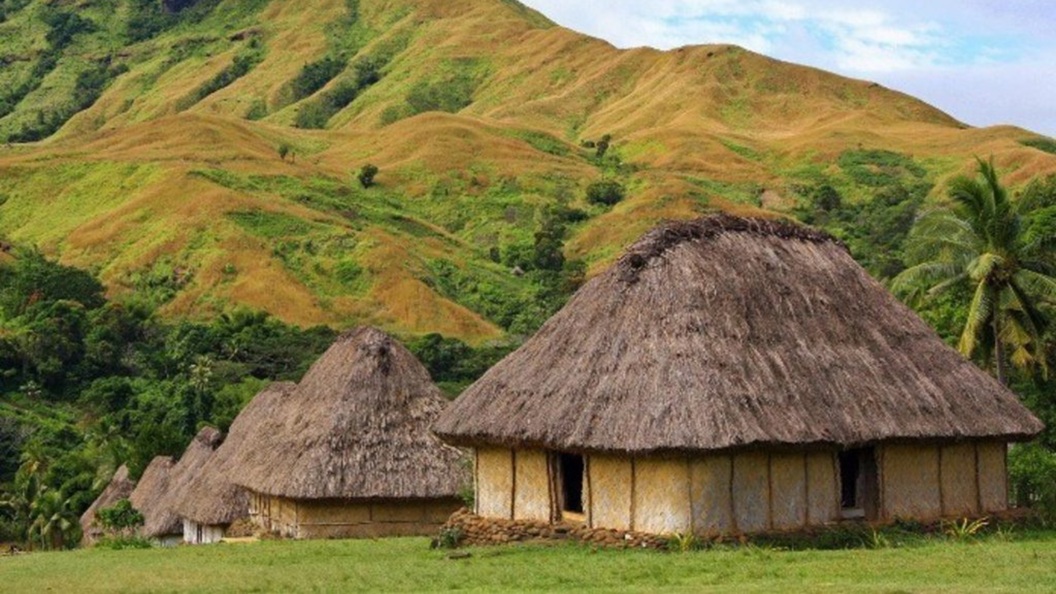Today, finding a bure in a Fijian village is such a rarity that it is like spotting a needle in a haystack.
But in the village of Navala, in the Ba highlands, the magnificent bure still reigns in the village skyline.
They stand proud on the hilly village green, reminding Fijians that even in the face of capitalism and modernity, remaining architecturally traditional is possible.
It is a matter of choice and pride.
It is true that rising costs and scarcity of local materials, among other factors, have displaced Fiji’s thatched wonders.
The change is a necessary and practical one and as a consequence, traditional Fijian villages are being slowly taken over by wooden, cement and corrugated iron low-cost housing.
But as people’s choice of homes change, so too will many of Fiji’s ancient and sacred knowledge and skills that have been perfected, mastered and passed down through time immemorial – bure building included.
As custodians of these traditional know-how and keepers of the stories that have revolved around the mighty bure, we owe it to the world and to our ancestors, to revive bure construction and thatching.
Of importance too, is the need to protect our natural environment, from where raw materials needed to build bure will be sourced now, in the immediate future and beyond.
In old Fiji, the bure was more than just a dwelling place, of humans and of gods. It represented more than just the epitome of Fijian artisanship and cultural intellectual property.
The bure was a uniting force, bringing together the community to one moment of unique collaboration.
“That gathering of such people is called solesolevaki, where everyone gathers together with the aim of building a dwelling at a short time,” noted University of Hawaii assistant professor, Dr Tarisi Sorovi-Vunidilo.
The cost of building a bure was and still is very minimal. It mostly requires materials from natural surrounding and a large group of free labour consisting mainly of members of one’s extended family.
The dwellings are weather-conditioned, having natural air-conditioning effects during hot seasons while on the other hand they provide warmth and comfort during the cold season.
“This could be due to the ventilation effect of the natural materials as cold or warm tropical air passes through the house easily when compared to modern materials,” Dr Vunidilo said.
With tourism being the leading revenue earner for Fiji, these traditional buildings can be used to lure international visitors to once again appreciate what Fiji was well known for in the past.
This is why Navala Village in Ba, the only village in Fiji that has all bure houses, has been a major tourist attraction for decades.
“Fiji needs more villages like Navala in order to bring back the rich architecture of Fiji, not only for tourists but for our local population too,” said Dr Vunidilo.
“It is critical for Fiji to revive the building of traditional houses to avoid the complete loss of traditional knowledge.”
It was exactly those reasons highlighted by the Fijian academic that a group of enthusiasts and conservation-conscious individuals and organisations gathered by the Wainikoroiluva last month.
At the Namosi Eco Retreat, Culanuku villagers, from Serua, took the lead in demonstrating traditional bure thatching to visitors who were part of the Sustainable Sago Palm Harvest and Thatch weekend held on July 11 and 12.
In the end they did a successful handover to the Navunikabi villagers, who have took over and completed the thatching in true village-to-village teamwork and knowledge exchange.
“A highlight of the weekend was seeing experienced thatchers from different villages come together for a knowledge exchange about Sago Palm (Metroxylon vitiense ) thatching,” said Namosi Eco Retreat owner, Danny Jason.
“We had Culanuku villagers from Serua start the thatching and demonstrate their methods over the weekend, they then handed over to the Navunikabi villagers of Namosi who have since finished the thatching.”
“These experienced thatchers from two provinces have been able to exchange information about the different materials and methods they use.”
The collaboration and exchange wouldn’t have been possible without the work of domestic NGO, Nature Fiji Mareqeti Viti, through its Soga Sustainable Harvesting and Conservation Project.
The project has been involved not only in the protection of soga in the wild but also the endemic palm’s sustainable harvesting and the creation of sustainable livelihood opportunities for resource owners.
“Our projects depend on the cooperation from rural communities and resource owners. So we need to give them incentives and work with them to save the sago palm,” said Nature Fiji conservationist officer, Jake Taoi.
The Serua province used to host expansive sago forests but these have diminished as acres of land gave way to farms and new development.
At one point, its numbers had dwindled to the extent that a recovery plan was needed to ensure the survival of the endangered endemic plant.
Its threats included it being geographically restricted, threatened by habitat destruction and overexploited for thatch for the tourism industry and palm heart consumption by local consumers. Furthermore, it was not protected by national or international legislation.
“If communities don’t see any monetary gains from resources they own, they are most likely to clear sago palm forests for farming purposes,” said Taoi.
Reviving bure construction and thatching knowledge and skills in the neighbouring provinces of Serua and Namosi, as well as other parts of Fiji, will consequently place a high demand for soga, hence allowing villagers a stable and sustainable source of income and ultimately drive them to protect the resource.
Protecting the soga in the wild is one thing and ensuring it is harvested sustainability is another.
The latter demands that while harvesting soga leaves used to make thatch shingles, villagers from Culanuku and Tubarua should not fell palms.
Secondly, no fronds are harvested from trees that do not have a clear 50 cm trunk at the base of the palm.
A thick trunk means the palm has enough stored energy to overcome adverse climate and diseases.
In addition, the younger fronds of the palm produce smaller leaflets (commonly called soga ni bisinisi) are weak and not good for thatch shingles.
Also, at least five fronds (including the central spear frond) should remain on the palm above the harvested fronds.
This is because the soga needs existing fronds to continue storing energy so that it provides for future flowering, fruiting and harvests of the palm.
Ensuring that the fading tradition of bure construction does not completely die out and that its knowledge and skills are passed down to the younger generation of today, begins with environmental conservation.
Danny Jason, owner of Namosi Eco Retreat and a son of Navikabi, are amongst those worried about this fast dying traditional artefact and the natural resources needed so that we can continue to build them.
After working in a few tourism-related jobs in Nadi and the Coral Coast, he decided to offer day trips and homestay at his village, in the highlands of Namosi.
Two to three months down the line, after sensing the need to offer tourists more privacy, he decided it was time to set up a little eco-tourist attraction along the river that ran beside the village.
“I wanted my guests to experience something authentically i-Taukei so I built bure along the river,” Danny says.
But maintaining the bure became a problem. To the rescue came local NGO, Nature Fiji Mareqeti Viti, who had been involved for some time with a project on the conservation of soga or sago palm endemic to Fiji.
Danny wanted to rethatch his bure using sustainable methods and Nature Fiji provided the technical expertise, backed by many years of research.
“Getting help from Nature Fiji was a blessing,” Danny says, “The result was rethatching my bure using soga harvested sustainably”.
“I hope we can continue this relationship in the future when we re-thatch more bure.”
Since 2012, Vitale Livaliva, from Masi, Nuku in Serua has been a popular figure in Nature Fiji’s soga conservation project. He is a bure master builder, having vast knowledge and skills in the use of Fiji’s precious soga for thatching purposes.
Livaliva is married with a son who is quickly following his footsteps.
He is passionate about the conservation of soga and having Culanuku Village, where he resides, as one of the last soga frontiers in the wild.
“The conservation of soga in Serua has not only revived the palms in the wild, it has also revived the tradition of bure construction,” Livaliva says, with tears in his eyes.
Many years ago, the number of soga plants in Serua was dwindling to the point of near-extinction. Vast areas of land where the native palm once grew abundantly were logged expansively using unsustainable harvest methods.
Intervention through a number of collaborative efforts was the only way to revive the degraded soga landscape.
Nature Fiji worked closely with resource owners in Culanuku, Serua to rehabilitate the soga forest through a replanting programme. Today, that has extended to support family livelihoods.
Soga leaves are harvested sustainably and women are engaged to sew soga shingles used in thatching bure.
By creating livelihoods through the processes of soga planting, harvesting and shingle sewing, resource owners are given the impetus to protect and conserve the sago palms for the benefit of future generations
“A bure takes us on a journey to the olden days. Living in it promotes peaceful and healthful living,” says Livaliva.
“As a master builder I am proud to be involved with soga conservation and the revival of bure thatching. It benefits my six-year-old son whom I hope will follow my footsteps and will benefit Fiji in the future.”
Marita Manley, of Talanoa Treks, Fiji’s only dedicated hiking company, believes bure thatching using sustainable means can provide a market for tourism properties.
A member of Nature Fiji’s management council, Manley says the whole thatching exercise at Namosi Eco retreat had a number of objectives one of which was “trying to create value chains”.
As the COVID-19 pandemic continues to heap havoc in Fiji, Manley adds “it is good to have fresh conservation around creating eco- tourism ventures that creates livelihoods and protects nature”.
“The crisis allows us to pause and do a little reflection on opportunities where we can engage the tourism industry more broadly,” she says, “it is a good time to think about what kind of tourism industry we want in the future and how tourism activities can benefit the community.”
Re-thatching one bure in the Namosi highlands may be a small ripple in the ocean of 21st century construction business but it has the power to influence a revival of ancient bure construction and thatching – once the pride of traditional Fijian architecture.
Whenever an opportunity pops up to build a bure for a home, public building or hotel accommodation, it must be regarded as the perfect moment to put Fijian tradition and culture to practice and back on the map.
Building a bure is more than just erecting a physical structure. It creates opportunity for village folks to enhance their cooperative efforts and collaborative capacity, to work together and assist each other.
There are also rituals and symbols associated with each and its many parts, bound by strings from forest vines.
For example, the yavu or raised platform of stones on which a bure is built, especially the chief’s home or the meeting bure, represents the special connection between the people and their ancestors.
Using the bure to market tourism and appeal to people the world over, encourage the protection and sustainable use of the endemic soga, as well as promoting it as a rehabilitative response during disaster, will increase its value at a time when it seems to fast fade into oblivion.
As many more cottages get thatched at the nature-rich Namosi Eco Retreat, as more youngsters from Navunikabi Village learn the trade from their elders, as Nature Fiji makes more inroads into soga conservation and as land and resource owners in Serua remain true to sustainable soga planting and harvesting – the bure may emerge again in all its beauty, fame and splendour.
Then, the legend of the moli ni veitala ni vanua will be murmured once more amongst the plains that drink from Wainikoroiluva and the grand old homes of wonder will be re-discovered again in Fiji’s village skyline.
n This article was first published in The Sunday Times in August 2020. History being the subject it is, a group’s version of events may not be the same as that held by another group. When publishing one account, it is not our intention to cause division or to disrespect other oral traditions. Those with a different version can contact us so we can publish your account of history too — Editor.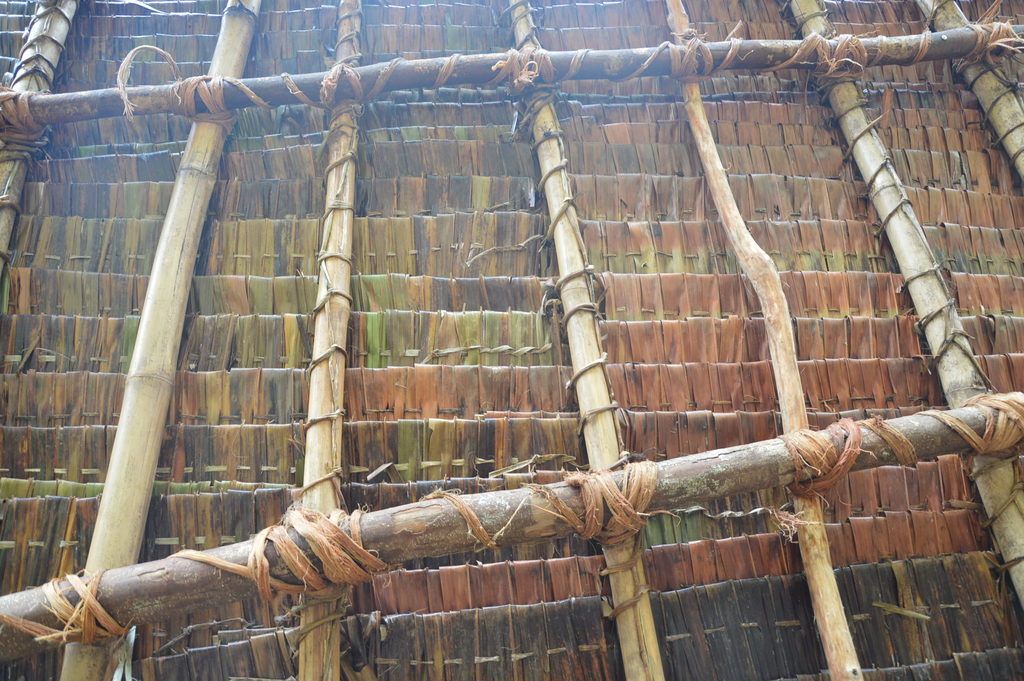
The intricate layers of thatched soga shot from inside the bure. Picture: FILE/John Kamea
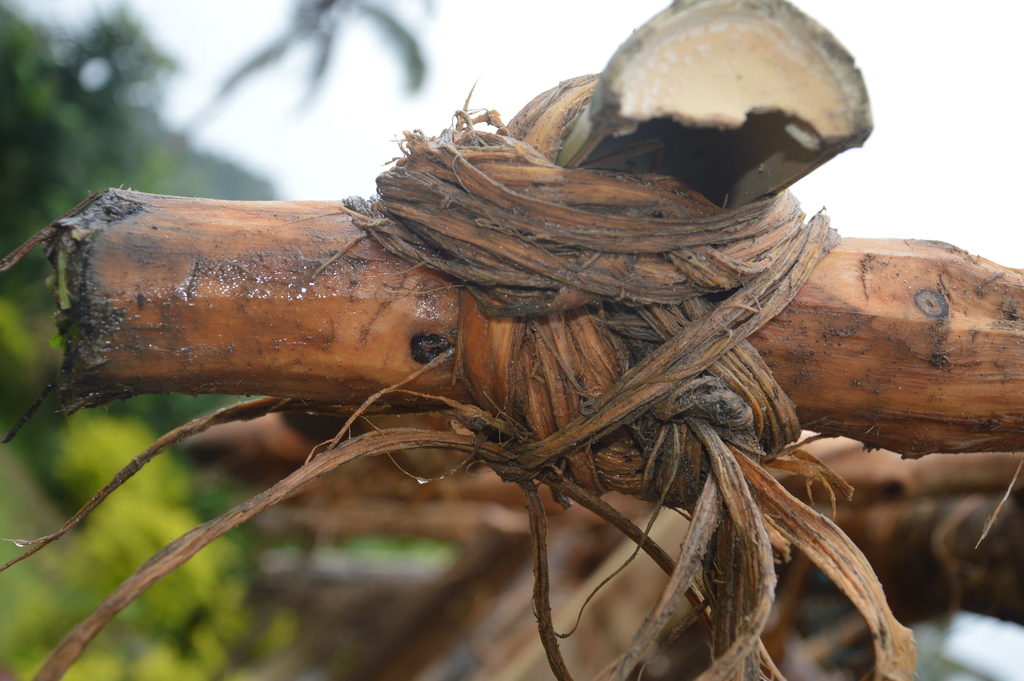
Traditional Fijian bure doesn’t use nails. Here strings made from tiri (mangrove aerial roots) strips are used to hold beams in place. Picture: FT FILE/John Kamea
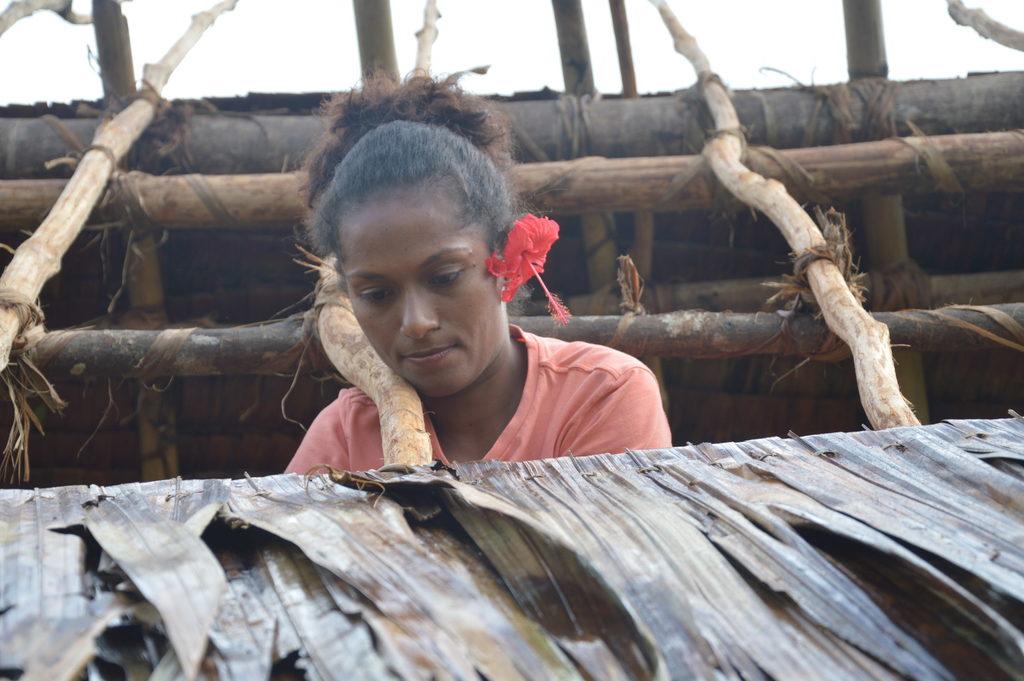
A young woman applies her bure
construction skills by working on a layer of thatched palm fronts on the roof.
Picture: FT FILE/John Kamea
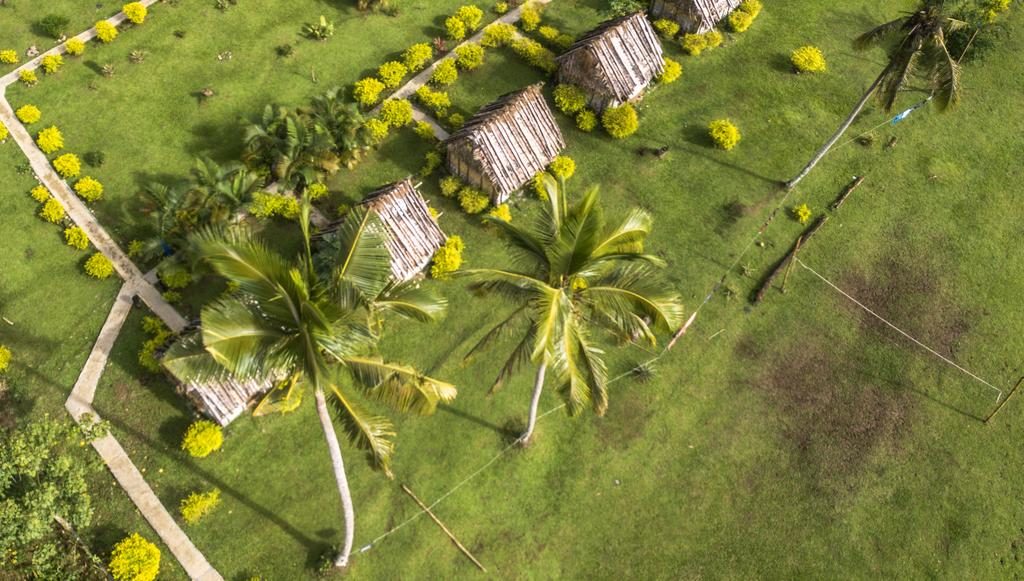
An aerial shot of Namosi Eco Retreat. Picture:WWW.BOOKING.COM

